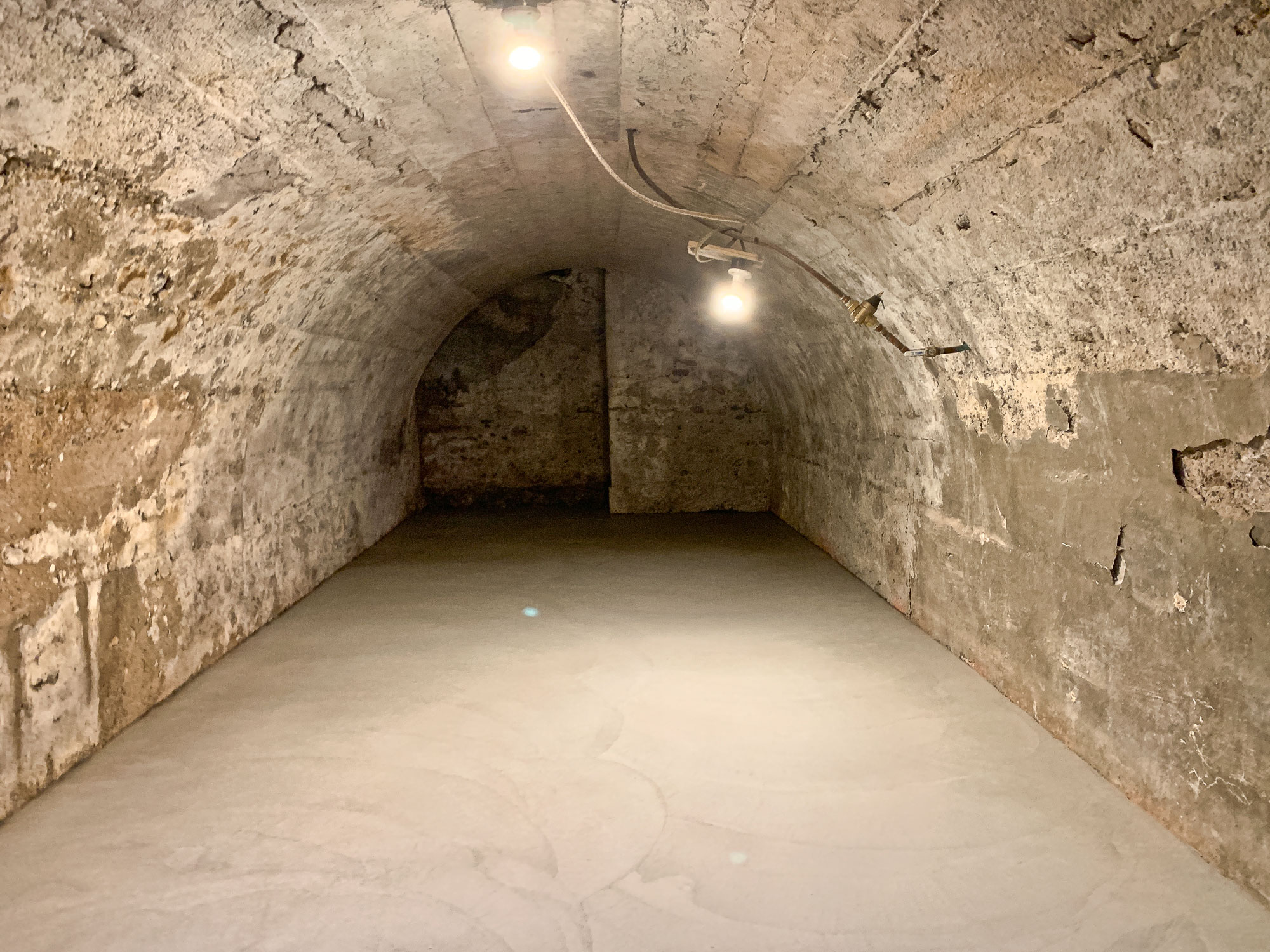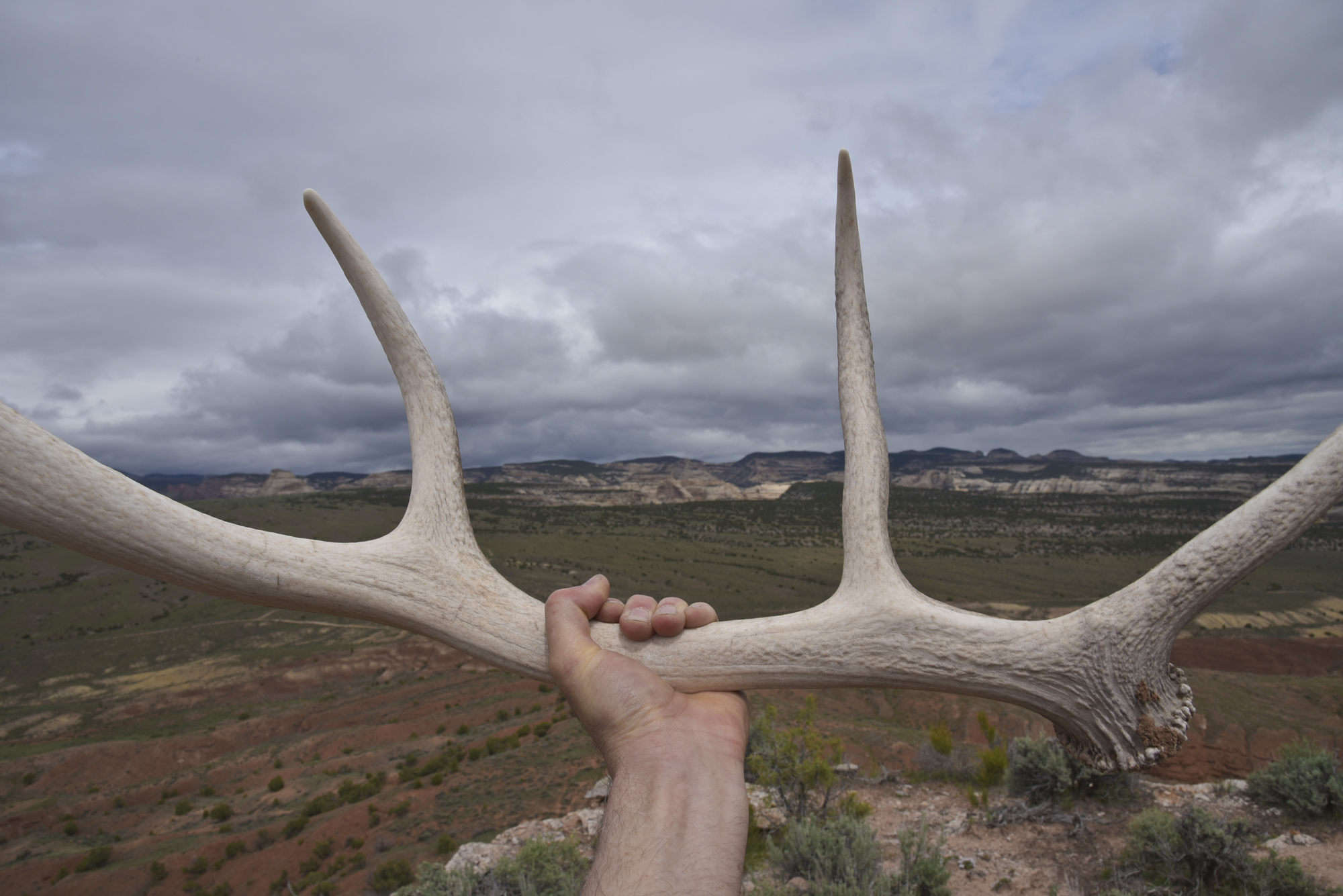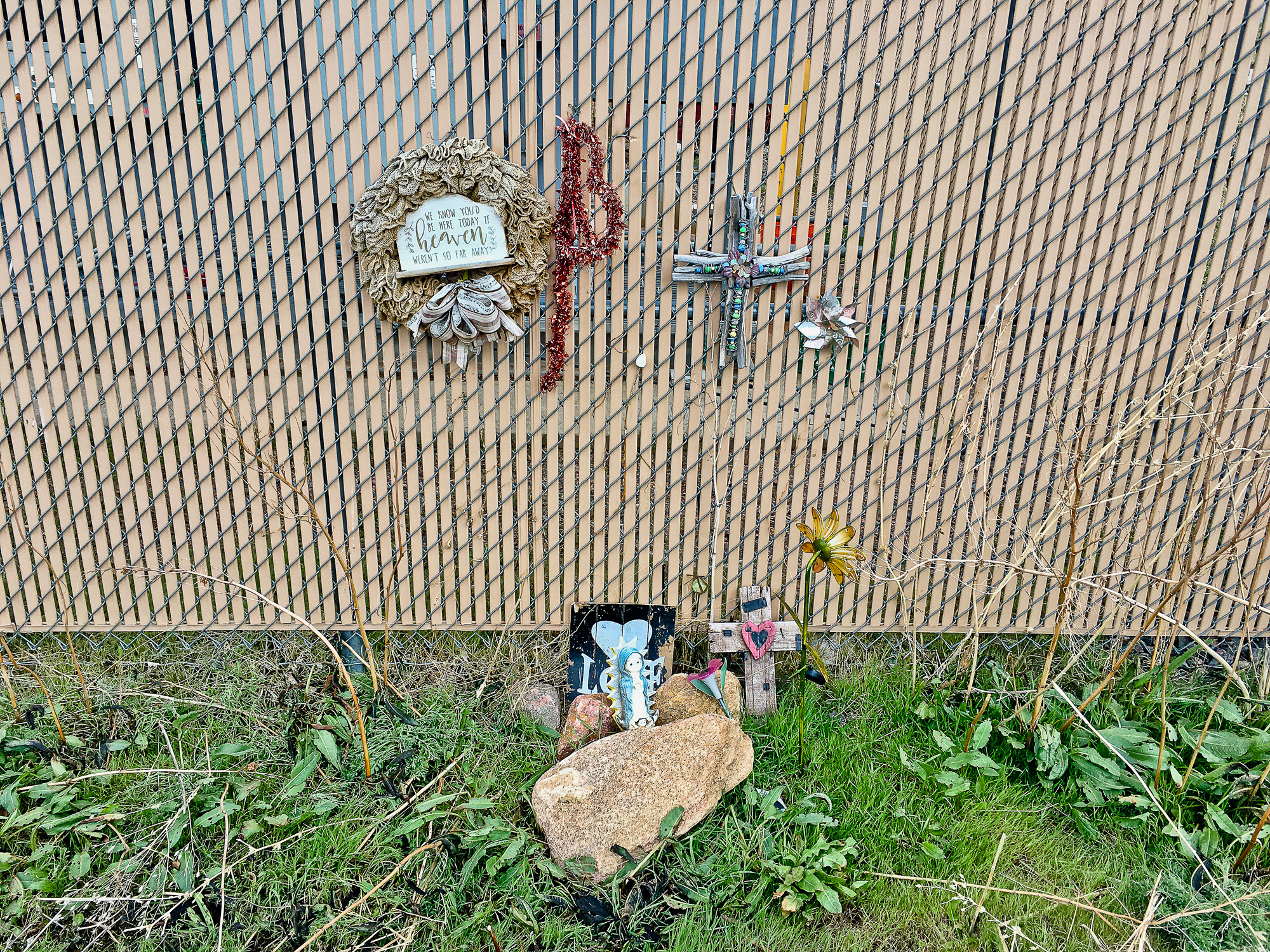
from Story Club
[ED: Edited to clarify sense and meaning. It will likely be edited after posting as well.]
and
I was reminded how culture is often (always?) overtaken (taken over?) and becomes an extension of the dominating state (or power in control of the state). While throughout the Third Reich, there were countless small acts of kindness in the face of extreme social oppression and control, this did not stop the juggernaut of singular human pathology turning the overall society into a violent (Nazi) killing machine. And along with the killing, that machine simply subsumed cultural production. Remember book-banning-then-burning? Oh, wait, no need to remember, I can read about the banning here, now!
The foundation of the Amurikan system since WWII is predicated on an often-hidden-but-often-expressed element of violence that has superseded any prior Empires by orders of magnitude. We are of that system, and fully immersed within it. Think of both our long-ago stints in service of the “Imperialist Vanguard”!
I do truly hope that your optimism is not misplaced as we seem to slide into a vortex not dissimilar to the many vortices experienced by humans in the past and/or in other places. I often have the feeling that so many people in the contemporary developed world are so fully immersed in the consumption of mediated constructs of the world that unmediated, meat-space, direct apprehension of the world has been lost or at least stripped of its value. This would include direct face-to-face engagement with proximal Life (not in films, not online, not in books, but in direct expression and embodied impression). This is a fundamental of community that has been severely drained of vitality … by, for example, ‘social media’.
In a way, the power of Klemperer’s diaries, written/mediated contradict everything I have expressed here and do support your core idea, as they were ‘simply’ his writings—detailed daily reflections on events and feelings in his more immediate surrounds—that, through his perseverance, made it, bound, to my bedside table. Thence, giving rise to change within my embodied system. However, the time I spent reading them, well, would it have been better spent helping a neighbor (as I have been helped on occasion during my recent rural existence)? We cannot have anything approaching a democracy without community, and neither can we have a just or truly diverse society without the repeated, crucial encounter with the Other: open, embodied, hypostatic, indeterminate, unscripted, and imbued with the active presence of change. (Again, I contradict, yes, writing can do this, any mediated fragment of culture can do this, but …)
Hope this jangling screed doesn’t come across badly. Maybe I should have kept it in our private convos, such as they are! You know my respect for you. So it goes.
Perhaps this points to the idea that there are only small acts of kindness. That there are, in perceived reality, no societal, cultural acts of kindness. That tribal is tribal, clan is clan, and the will to survive in that exclusive social configuration is primal and primary. Altruism, while potentially able to bridge particular rival societal strictures in particular instances, is not able to change wider societal trajectories. This may be the source of liberal failure: imagining, falsely, that it is possible to do what is not possible, taming animal nature. Perhaps this impulse is simply another expression of human hubris. It also may explain the sudden withdrawal of (many) liberals from the scene in the moment, in the face of that wider swell (tsunami!) of societal grievance led by … a singular pathological will-to-survive. This retreat may have a texture of localized kindness, wonderful! But cataclysm at the more global scale may be inevitable. Indeed, at the psycho-spiritual scale maybe this is what Life is: the challenge to find a(n internal) energy source for the expression of kindness in the cataclysm. Not sure I personally have the capacity for this anymore, but that is another issue.
220425
City Market Fuel #404, 122 Gunnison River Drive
8.540 gallons
$2.879/gallon
$24.59
group portrait, dancers
along the road’s verge
The Disappearance of Liberal Education
[ED: Almost 75 years ago, this essay was published in a collection accompanying the 1954 set of The Great Books of the Western World, published by Britannica Press. While that collection of more than fifty authors—philosophers, playrights, scientists, authors, economists—is mostly all ‘Western and white,’ and definitely men, there is some relevant substance to the contemporary issues facing the US education system contained (t)herein. Primarily, the background question of shared understandings about reality: when these are no longer shared, democracy cannot proceed. At this juncture, I have little hope that the wider social system in the US is capable of pulling itself back from the devolution that appears to be accelerating. Many personal worries surround that. I predict that forms of ‘martial law’ will be declared in the US before four years are up, and I will not be surprised if it begins to appear widely in the next year. By then, soft critique from the ‘liberal’ side of the country will be moot and … wholly inadequate, as has happened before in the bowels of history. Privilege continues to insulate the 1% and [social] media [oligarchs] continue to siphon off the last drops of societal life-blood: community engagement. Shilling instead a form of attention-harvesting that, as with other forms of capital, concentrates ever more power in the hands of ever fewer individuals. What could possibly go wrong?
I can barely continue reading Klemperer‘s “Language of the Third Reich” as it resonates so powerfully across almost a century to this very moment.
The results of universal, free, compulsory education in America can be acceptable only on the theory that the object of the schools is something other than education—for example, to keep the young from cluttering up homes and factories during a difficult period of their lives, or to bring them together for social or recreational purposes.
These last purposes—those which are social and recreational—the American educational system, on a very low level, achieves. It throws young people together. Since this does not take any greater effort than is required to pass compulsory school laws and build buildings, the accomplishment of this purpose would not, at first blush, seem to be a matter for boasting. Yet we often hear of it as something we should be proud of, and even as something that should suggest to us the main line of a sound educational policy. We often hear that bringing young people together, having them work and play together, and having them organize themselves “democratically” are the great contributions to democracy that the educational system can make. This is an expansion of the doctrine that was popular in my youth about the moral benefits conferred on everybody through intercollegiate athletics, which was, in turn, an adaptation of the remark dubiously imputed to the Duke of Wellington about the relationship between the Battle of Waterloo and the playing fields of Eton.
more “The Disappearance of Liberal Education”
hypostasis
keyword cloud
These are the overarching geoscience categories that drove the generation of the full keyword cloud:
Geologic Units; Geologic Temporal; Geologic Terms; Geohazard Terms; CGS Research/Expertise Areas; GIS/map-related; Publication Type Codes; Medium/format; Locations: Geologic Regional, Mtns/Range, Rivers, Towns, Counties; Decades
This is the final specific keyword cloud for the Colorado Geological Survey that was applied across the entire (meta)/data/information space when/wherever possible:
* denotes keywords that refer to multiple items with the same name (cities, counties, etc.); and the bolded terms are the five overarching categories of expertise for the organization. These five were used as an ‘upper-level’ basis for organizing the web presence/navigation system.
I received no consequent support from CGS management for the process I undertook implementing a keywording system. Their info/dataspace was in disarray and between the public-facing and internal spaces there was no consistency in even the most basic of data organizational principles (like file naming). Given that the organization was, ostensibly, about science, this seemed to be a major lapse if only from the standpoint of consistency and repeatability. And, given my own responsibilities—publications, editing, social media and web work—directly related to the space, it was essential to do something!
Generating an effective keyword system requires careful balance and deliberate constraints to remain useful. While it’s tempting to create extensive tag clouds, an over-saturated system quickly becomes unwieldy and defeats its purpose of improving information findability. For most systems, an upward limit of ~500 keywords is optimal.
A strong keyword strategy needs to reflect both organizational needs and user behavior patterns, incorporating essential discipline-specific terminology and terms that apply to dispersed-but-related information. However, the keyword universe must be intentionally limited—being selective and strategic about which terms make the cut rather than allowing unlimited growth.
User perspectives are crucial in determining these constraints. I did spend time observing my colleagues, asking them about their search methodologies, and how they managed their own data. The forthcoming information generally illustrated what I observed among my media students: a lack of understanding of what “search” meant in a digital environment. Keywords should reflect how people actually search for content, although most people have rather idiosyncratic ways of dealing with information, often based on their first encounters with the digital tools involved. Generational differences in this regard are substantial, and do change all the time. The implementation of AI into the process are radically changing search processes along with the fundamentals surrounding the very presentation of information on the Internet itself.
A focus on standardizing is crucial, but this restriction will run up against that idiosyncrasy instantly, often with problematic results. Recognized and respected processes for responsible governance of a keyword system are necessary. That said, because of the resources needed to do the actual content tagging, a more-or-less static set of agreed-upon terms is best. If, for example, a new term is added, the entire dataspace should be reviewed for relevant placement of that new term. Otherwise there will be datasets that will not show up in search returns, rendering them redundant and reducing the overall value of data assets, and, negating the entire concept of standards.
According to sources, the CGS has apparently abandoned the keyword application process and even basic file-naming and filing conventions. So counterproductive! Good luck finding stuff!
love
…
I refuse to accept the idea that man is mere flotsam and jetsam in the river of life, unable to influence the unfolding events which surround him. I refuse to accept the view that mankind is so tragically bound to the starless midnight of racism and war that the bright daybreak of peace and brotherhood can never become a reality. … I believe that unarmed truth and unconditional love will have the final word in reality. This is why right temporarily defeated is stronger than evil triumphant.
A good read on a day such as this one …
to Björn Bjarnason
To the Honorable Björn Bjarnason, Minister of Education and Culture
As I have noted that you have put up some home pages asking for input regarding education in Iceland, I am transmitting this formal letter to you via email. (I apologize for not writing in Icelandic, but I am not very good at it even though I have lived in Iceland for five years…)
I am writing this letter to urge your continued support of the Icelandic Academy of Art.
Following I will present some personal opinions concerning the future of the Academy as well as some concrete suggestions and proposals. These considerations are based in my experience in teaching at MHÍ for the past five years as well as numerous guest-teaching positions at other Universities and Academies in Scandinavia and the US. Currently I am serving as Chair of the US-Iceland Fulbright Educational Commission (until September 1995) and as (Founding) Director of the Electronic Media and Photography program at MHÍ. My opinions are not necessarily those of either MHÍ or the Fulbright Board.
I believe Iceland is at a crossroads where the choices, opportunities, and outcomes will be largely determined by how the issue of a national educational policy is developed. As the post of Minister of Education and Culture determines this policy, I believe it to be the most critical cabinet posting in the entire government.
It is important to the future of Iceland that attention be directed to the building-up of a competitive and well-considered program of education in the arts. The recent confirmation of intent as expressed by the Althingi and the government in support of the official formation of the Icelandic Academy must be followed up by concrete action concerning the financial, physical, and ideological future of the institution.
more “to Björn Bjarnason”
July 1944
In February 1943, the fall of Stalingrad; in the spring, the Führer holds discussions with the King of Bulgaria, with Antonescu—Count Ciano is appointed Italian ambassador to the Vatican… What an impression it all made on us! Ciano shot, Bulgaria and Romania changing sides, Stalingrad as remote as a fairy tale… But something else made a greater impression on us—it was the same for both Neumark and myself: the impotence of memory to fix all that we had so painfully experienced in time.
When—insofar as we remembered it at all—had this or that happened, when had it been? Only a few facts stick in the mind, dates not at all. One is overwhelmed by the present, time is not divided up, everything is infinitely long ago, everything is infinitely long in coming; there is no yesterday, no tomorrow, only an eternity. And that is yet another reason one knows nothing of the history one has experienced: The sense of time has been abolished; one is at once too blunted and too overexcited, one is crammed full of the present. The chain of disappointments also unfolded in front of me again.
[…] Ever since Stalingrad, since the beginning of ’43 therefore, I have been waiting for the end. I remember asking Eva at the time: Do you think it is a defeat, or do you consider it to be the defeat, the catastrophe? That was in February ’43. Then I had not yet done any factory duty. After that, I was a factory slave for fourteen months. And now it is almost three months since I was released, three months in which I find it ever more difficult to wrest useful work from my so-called free days.
The Language of the Third Reich – Klemperer
- Weaponization of Language: Euphemisms and politicized terms are used to obscure truth or polarize discussions.
- Power of Repetition: Repeated slogans and phrases reinforce ideologies, even when oversimplified or misleading.
- Language of Division: Dehumanizing or exclusionary language fosters conflict and “us vs. them” mentalities.
- Emotional Manipulation: Fear, pride, and resentment are evoked to sway opinions and shut down rational debate.
- Media and Authority Vigilance: Pervasive bias and mistrust in institutions highlight the need for critical thinking and media literacy.
watching Hells Kitchen
longevity conservation

220273
City Market Fuel #404, 122 Gunnison River Drive
7.263 gallons
$2.799/gallon
$20.33
watching Hells Kitchen
The lifetime of situation
BEFORE


Thoughts unreel, leading nowhere in particular: parrots leading monkey-brain. So many sketches started—more than one hundred drafts in the ‘pending’ zone—while lacking the embodied discipline and focus to finish any. Blah, blah, blah.
My situation is moving rapidly towards a major change, assuming I can manage, and that is the main focus of a very blurry existence. Blurred by fractured attention, internal and external stressors: societal instability, monetary insecurity, psycho-spiritual transience, mortality, inexorable cosmological flow, etc.
Reflecting on the four-year tenure here in rural western Colorado, the “Western Slope” as it is called, being on the west side of the main range of the Rocky Mountains. It’s been a mixed experience. Initiated in the depths of a bad cancer prognosis, it had a harsh essence from the beginning. Three of the past four years was spent, primarily, working full-time/remote for the CGS. Two of those years were with the most miserable excuse of a boss, the former State Geologist. With new management, the final 16 months were far better, but the profusion of way too many responsibilities simply burned me out. After a disturbing interaction with one of my colleagues—one whose work was an essential support element to mine—who had confided to me that he wasn’t going to do anything at work unless forced to, I decided to pull the plug with just three weeks notice. Precipitous, yes, but somehow necessary, given how life-time was/is slipping away at a rate that continues to disturb tranquil thought every day. It was a bit surprising how easy it was to ‘retire,’ and how quickly the job vanished in the rear-view mirror. How all that time spent since 2016 evaporated almost without a trace. I did leave the highly organized legacy in the form of their information/dataspace, built with my life-energy. That along with putting in place workflows that guaranteed—to the degree possible at my level of responsibility—the highest quality of their public-facing information.
“So what?” Richard Pryor asks.
The other focus of attention was to the house and the 13.5 acre property, the land. Once I left the job, the countdown started on the retreat from this place, first back to Arizona, and thence back to Iceland/Europe. All along, since I bought the property here, I’d spend hours each week day, many more on weekends, working on clearing up something or other. Cutting and collecting dead wood, pruning trees, moving rocks, weed-whacking, clearing defunct fencing, encouraging re-wilding, selectively reinforcing aging out-buildings and root cellar, removing vast amounts of detritus from same, improving the water drainage situation, setting up a large composting system, and re-doing the house interior and exterior to some degree (roofing, kitchen, bedroom, and bathroom especially). I have made a couple thousand images from the property, but rarely explicit before-and-after images, there is some evidence of the improvements. The main goal was to stabilize the physical infrastructures and fix things that bothered me or obstructed optimal enjoyment and operation of the facilities. This became, cumulatively, the dominant creative act. In retrospect, I could have done more careful documentation and explication here on the blog, following my efforts, but there wasn’t the will. If nothing else, the move from Golden saved me from paying $50K in rent over the years. I do have a potential buyer.
I do watch the sky here. With a 360-degree panorama (the property has few trees) and a view up to a hundred miles (the San Juan Mountains to the south, the Uncompaghre Uplift to the southwest, Hells Kitchen directly west, and Grand Mesa to the north), there is always much to contemplate in the sky. And aside from a paranoid neighbor from Southern California who recently installed a ridiculously bright night light on his garage, the area is known for its dark skies. This will be the greatest adjustment, as my place in Arizona is deep in the ponderosas. I’ll have to wait for Iceland to ponder and enjoy big skies again.
The economic demands of this particular period of existence, from 2016 until now, have impacted life in ways that confirmed my long-standing perspective on the pursuit of money—as Blake expressed in Laocoön—“Where any view of Money exists, Art cannot be carried on, but War only.” Formal creative pursuits were sporadic, and amounted to little more than recording fragments of life along the way, this blog being the only public venue aside from aporee::maps and participation in a few international streaming projects.
Contemplating my next situation includes mulling the question of how the physical dislocation and change will go down. The next temporary physical landing place is known, but far away, and the inertia of being here is now exceedingly large as precipitated by time and age. That and TOO MUCH STUFF. The Archive weighs heavily on mind, and, once moving, on body. In a cosmos that is transitory at all scales, the attempt to stop entropic decay is almost completely pointless. And through aging, The Archive becomes something of a retroactive creative crutch where delving into it is a poor substitute for actively creating *now*. At the same time it presses down heavily with the message that there is enough stuff in the world: no need or reason to make more. Best to simply live and spend time with Others instead.
Stay tuned. Oh, but wait, there will be stiff competition for eyeballs here, what with the ongoing socio-political conflagration about to receive another corpulent splash of gasoline… Sigh. I’d advise dropping social media.
AFTER


Scott ‘Scoop’ Butki 1969 – 2024
![]()
Noting, gah, another sad passing—a couple days before President Carter’s—this of a friend in the BrainStorms-MetaNetwork virtual community that I’ve been participating in for more than 25 years. A sudden passing: he ended his life. (Hard to see and read that phrase, it seems to have brutally incorrect meaning.) Scott was a multi-talented, kind, humane be-ing. Though buffeted by many challenges he always expressed that kindness towards those he encountered—while resisting those who were intent on the oppression of others. He sought vital, personal, local, and community change/evolution within the often harsh nature of Amurikan society.
“It’s all about priorities,” he was known to say.

Scott is survived by his mother, Joanne Butki; his brother, Jay Butki (wife Ju Kyung Butki); and his sister, Ellen Butki; his nieces, Natalia and Marina; his nephews, Arne and Jonno, and an extended family of friends and colleagues who will forever cherish his memory. He was preceded in death by his father, Arnold Butki, in 1999.
Scott grew up in Riverside, California, where he graduated from Riverside Poly High School. He earned a Bachelor of Science degree in Communications with a Journalism emphasis from California State Polytechnic University, Pomona, and later pursued a Master of Arts in Teaching at Frostburg State University in Maryland.
Scott began his professional journey in journalism, a career that allowed him to live in multiple states; California, Arizona, Arkansas, Maryland, Texas, and work for various organizations. His passion for storytelling was deeply rooted in his desire to inspire empathy and combat apathy among readers. He also sought to expose wrongdoing in local government and businesses. After more than a decade in journalism, Scott transitioned into education, focusing on special education to support marginalized communities. For over ten years, he dedicated himself to mental health work, often assisting teenagers with autism. Among his most cherished roles was teaching a Harry Potter-themed class at the University of Texas for adults with special needs.
Scott’s commitment to social justice was unwavering. Inspired by figures such as Gandhi and Martin Luther King Jr., he sought to live a life of non-violent activism. Through his involvement with the Unitarian Universalist church in both Hagerstown, MD, and Austin, TX, Scott worked on anti-racism education initiatives and partnered with local groups to promote equity and understanding.
A voracious reader, Scott set an ambitious personal goal of annually reading 50 books and interviewing 25 authors, a goal he met for many years. He also found joy in walking and running, playing backgammon, indulging in rocky road ice cream, listening to music, connecting with friends on social media, and tirelessly working to fight hate, not necessarily in that particular order. Everyone will miss his sense of humor and his weekly online questions on social media, such as ”What are you grateful for?” and “What made you smile today?”.
Scott’s life was defined by compassion, advocacy, and an enduring love for reading and learning. May his legacy continue to inspire all who knew him. He will be missed dearly but forever held in our hearts.
Case Study: Big Thompson Flood
On July 31, 1976, a powerful thunderstorm over Colorado’s Big Thompson Canyon unleashed a deluge that became one of the state’s most catastrophic natural disasters. Known as the Big Thompson Flood, this event claimed 144 lives, caused significant damage to infrastructure, and left a lasting impact on both the physical and social landscapes. This flood serves as a case study of the interplay between geologic conditions, meteorology, and human activity in a high-risk environment.

The Meteorological Trigger
The Big Thompson Flood was caused by an intense, stationary thunderstorm that dropped more than 12 inches of rain in just four hours over the steep canyon. The localized nature of the storm, combined with its high rainfall intensity, overwhelmed the Big Thompson River’s drainage system. This type of weather event is not uncommon in Colorado, where summer thunderstorms can deliver large amounts of precipitation over short periods. The semi-arid climate, combined with the region’s high topographic relief, creates conditions that are particularly conducive to flash flooding.
Thunderstorms of this magnitude occur when warm, moist air is forced upward by the mountainous terrain, cooling and condensing into heavy rainfall. In the case of the Big Thompson Flood, the storm’s stationary position ensured that all the precipitation fell within a confined area, greatly intensifying the flood’s impact.
Geological Setting of Big Thompson Canyon
Big Thompson Canyon, located in the Rocky Mountains of northern Colorado, is a steep and narrow valley carved over millions of years by the Big Thompson River. The canyon’s geology is dominated by granitic bedrock interspersed with loose sediments and colluvium, materials that are easily mobilized during heavy rainfall. The steep canyon walls and limited floodplain amplify the destructive potential of flash floods, as water rapidly accumulates and accelerates downhill.

One of the key factors in the severity of the 1976 flood was the canyon’s geomorphology. The steep gradient of the river increased the velocity of the floodwaters, allowing them to carry massive amounts of sediment, debris, and rock. This debris flow not only caused direct damage but also increased the erosive power of the water, undercutting slopes and triggering landslides that further contributed to the destruction.
2025 is the 32nd year of the neoscenes travelog
A few months after the release of the first html-based ‘web browser’ (Mosaic) in 1993, working with folks at ISMENNT (the Icelandic Educational Network), I was able to establish the first Icelandic educational institution’s website (for the Myndlista- og handíðaskóli Íslands (MHÍ) – Icelandic College of Arts and Craft) and along with that server access, established the initial hopkins/neoscenes web presence. Through many iterations, upgrades, platforms, and technologies I’ve somehow kept it running and proliferating. Hasn’t been cheap, nor lacking enormous floods of frustration with the shifting vicissitudes of arbitrary tech development, but it’s my primary creative output at this point.
Hitch a ride if you like, SUBSCRIBE to the MAILING LIST:
Jimmy Carter 1924 – 2024
HR 82
I started this post back in March, titling it gut punch from the Feds, but I never finished it. Here we are at the end of the year and that gut-punch—a fiscal one that drained the life out of me this whole year—has been pulled. And pulled retroactively, no less, to the end of 2023: good deal! And, as well it should have!
Since entering the Amurikan to workforce in 1975, I worked enough ‘quarters’ and payed into the system to qualify for Social Security (SocSec). Not a whole lot, but some. So when I was planning what my meager retirement finances would look like, I used the numbers that SocSec officially generated for me based on those earnings. As I lived overseas for a much of my adult life, I had acquired a small pension in Iceland, an even smaller one from Finland, and recently a few dollars from the state of Colorado: together these totaled a few hundred dollars. However, unbeknownst to me—okay, shitty due-diligence on my part—there was a law on the federal books called the Windfall Elimination Provision which dictated through bilateral agreements with, for example, Iceland and Finland, that my SocSec in the United States would be penalized by 60% of the total value of my other pensions. Suddenly I was confronted by the realization that my Social Security in the US would shrink by more than $400/mo. that’s a lot of money when the total was only $1000/mo to begin with and the total of all pensions is less than $1500/mo before taxes.
Because the law mainly applied to anyone receiving a pension in the US—several million people—the 118th Congress, after 20 years of wrangling, came to the conclusion that there were too many valuable constituents getting screwed by this ‘provision’—teachers, police, fire-fighters, other municipal workers, and folks like me with international pensions. I still don’t understand the original rationale for the initiation of the WEP in the 1970s, like any of us were really making a huge ‘windfall’ … ever, while working or now in ‘retirement’. Sheesh. H.R.82 – Social Security Fairness Act of 2023 was passed last week by the House and Senate, and signed into law by the President. It is retroactive to December 2023, right before I parted from the CGS and had to pull the trigger on my SocSec, so I should get all the withheld funds back.
On a side note, I want to recognize the Icelanders who run their pension system, how professional, quick, accurate, informed, friendly, and efficient they have been to work with. It took all of four minutes to get set up at their office in Reykjavík. Same with the Finns, a humane experience with their very funny sense of humor. To the contrary, as I was navigating this issue at the beginning, the woman in the Denver SocSec office, with whom I could only *fax* (!!!) was quite the nasty character. The offices have an armed Federal guard (oh, wait, that’s supposed to make me *feel safe*?), and the *fax* technology issue was simply incomprehensible (and completely unacceptable in 2024!).
I was going to thank the politicians who made the repeal happen, but research into that made me nauseous. The Social Security Fairness Act was submitted to every Congress back to 2000! Duly noted: how, towards the final vote, most Republicans started to pile-on for a free ride of positive press after they had long-opposed passage. Pragmatic and corrupted power-seekers all, no kudos to any of them that I hope to receive my just payments—as I *should have* at the beginning. That modest increase will help cover ever-rising utility, medical, and food bills!
Covid
portrait, Bjarni
group portrait #06
portrait, Kaisu
220135
City Market Fuel #404, 122 Gunnison River Drive
8.977 gallons
$3.029/gallon
$27.19
pulling plugs
I finally pulled the plug on Twaddle, aka eX, deleting my account last month. Long overdue, and I would call on anyone else who is still propping up one of the least socially-conscious oligarchs on the planet to cease-and-desist. Meanwhile, I’ll cheer that misfit on to Mars. As for the rest of them, well, let them eat cake.
Back in the ‘aughts’ I routinely early-adopted social media platforms to maintain current experience for my teaching on what was then still called “new media”. A decade into the World-Wide-Web, 2003 or so, Web 2.0 had arrived, signaling the evolution of general ‘interactive’ web platforms that allowed for user-driven and collaborative experiences. Web 2.0 transformed the internet from a generally static platform into a space where users could dynamically create and share content, but its rise also brought about critical (social, behavioral, personal) concerns that I explored in many of my workshops and lectures. This era’s defining features—social media, user-generated content, and algorithms that tailor information, and now AI—have amplified both personal expression and misinformation, often blurring the lines between fact and opinion. While Web 2.0 promised a democratized digital space, it has led to powerful tech companies amassing vast troves of user data, raising privacy issues and consolidating control over information flow, features almost completely unregulated in the US. Surveillance Capitalism anyone? Algorithms designed to maximize engagement have also been criticized for promoting social echo chambers and polarizing content, contributing to social divides. It’s all about eyeballs in the ‘attention economy‘. Through their perversely inverted efforts to be user-centered, the oligarchs of Web fostered a landscape where manipulation, privacy concerns, and misinformation are increasingly prevalent: it’s user-centered alright, but the user is merely the object of extracted wealth.
Yup, here we are. I hadn’t been active on Twaddle for some years aside from attention paid to the CGS work account up until last year, and a very occasional glance at my feed. It was functional for a time, but the ‘new ownership’ indeed sent it to 100% shit, stimulating the departure. The entire arc of evolution completely confirmed my hypothesis how those who control a communications protocol control both the form(s) and content of the communications occurring. Not only that, but the protocol and its ‘owner’ actually tap off a certain amount of power—real social power—from those using the platform. The X possessor is a case in point, and a case that threatens the stability of the social system. I long ago departed from FazeBuch (2010) and mostly from InstaHam (still have an account but don’t post and rarely look at it).
What about BlueSky and Mastodon? They provide more direct user control without a central governing entity. Back to distributed models versus centralized models: a deep conflict that’s been raging since computing began!
Of course, in the end, there is no privacy left in the US social sphere. What you consume—from food to media, everything; where you go; who you communicate with; what you say; what you do; how much money you have; what medical issues you have; where you work; what you studied; your interests and beliefs; your voting history; your criminal and court records; ad infinitum …
Not only that, all those terabytes of data are subpoenable in a court of law: What’s your level of confidence in the justice system in the US these days?
On the related topic of concentration of wealth, that this infographic is more than ten years out of date makes it even more disturbing:
bed
Diaries – Klemperer
One hundred pages in, now into the fall of 1942 as, unbeknownst to Klemperer directly at the time, the “Final Solution” is being implemented by the Nazis. Hearsay begins to accumulate. Klemperer’s microscopic view, no, his immersion in life as a Jew married to an “Aryan”—a ‘special’ case in the Nazi hierarchy of depravity—is at once thoroughly banal as a daily journal while riveting as an unmasking of Arendt’s “banality of evil.” The horrifying details of the increasingly oppressive restrictions accumulate incrementally within a framework of conflicting logics each day, while random visits from the Gestapo destroy any vestiges of normality as the wider German population seems largely clueless by choice.
A partial list derived from the book encompassing some of the punitive laws and conditions in place by the early summer of 1942:
- Mandatory Identification: Jews were required to wear the yellow Star of David visibly on their clothing. It could not be pinned on, it had to be sewn on a heavy outer coat, making the wearing of it even more unbearable in the summer.
- Travel Restrictions: Jews were prohibited from owning cars or bicycles, and they faced severe restrictions on public transport usage. Travel between cities required special permission.
- Property Confiscation: Jews were stripped of personal property, including homes, furniture, and valuables, which were often confiscated or forcibly sold at low prices.
- Housing Restrictions: Jews were forced into overcrowded “Jewish houses” (Judenhäuser) and forbidden from renting or owning other properties.
- Employment Bans: Jews were excluded from most professions and could only work in jobs deemed acceptable by the regime, typically low-wage manual labor.
- Food and Shopping Restrictions: Access to groceries was limited, with Jews only allowed to shop during restricted hours, often when stores were nearly empty.
- Education Prohibitions: Jewish children were barred from attending public schools, and higher education was entirely closed off to Jews.
- Social Isolation: Jews were banned from many public spaces, including parks, theaters, cinemas, and libraries.
- Medical Access: Jews could not visit non-Jewish doctors or hospitals and were denied most medical care except from a few Jewish professionals.
- Curfews and Movement Limits: Jews were subjected to curfews and confined to specific areas.
- Marriage and Relationships: Marriages between Jews and non-Jews were outlawed, and existing mixed marriages faced intense scrutiny and pressure.
- Cultural Erasure: Jews were barred from owning radios, telephones, and typewriters, further isolating them from the broader world.
- Confiscation of Pets: Jews were forbidden from owning pets, and any existing ones were often confiscated or destroyed.
- Bank Account Monitoring: Jewish bank accounts were closely monitored, with savings often seized.
- Deportations: The ultimate restriction was the ongoing deportation of Jews to ghettos, concentration camps, and extermination camps.
These measures, constantly being ramped up, aimed to dehumanize, isolate, and impoverish Jews, stripping them of their rights and dignity as part of the Nazi regime’s genocidal agenda. The diaries provide an invaluable firsthand account of the escalating persecution during this period. And, obliquely, how the wider population either participated in the process or remained purposely ignorant.
I will probably suspend reading this volume in the stead of first understanding the more insidious evolution he documents in the first volume where the initial Nazi take-over of Germany proceeds:
Case Study: mine subsidence, CSM
For decades, the west side of the Colorado School of Mines (CSM) main campus had subsidence issues related to historical mining activities. At one point, in the 1990s, one of the married student housing units in that area was so badly damaged that it was condemned. In the early 2000s, after the school converted the subsidence-prone area into intramural-athletic (IM) fields, ongoing subsidence-related issues were still being reported.
Clay mining in Colorado dates back to the mid-1800s and Golden was a particularly good location for clay found in the Laramie Formation. This clay has been used for a variety of industrial purposes over the years including construction (bricks, structural tiles, sewer pipes), terracotta, refractory clays, and earthenware. The mining of kaolinitic claystones in what was later to become the western area of the Mines campus left backfilled/collapsed mine workings and the possible presence of underground void spaces. To complicate matters, that same area was also the site of coal mining in the 1880s and 1890s. In particular, the Pittsburg Coal Mine entry shaft may have been located in the vicinity of one of the observed subsidence features. This mine reportedly operated between 1876 and 1880, but is un-recorded by the State. The mining operations were thought to be on three levels at depths of 100, 150, and 225 feet running parallel to the mountains.

219956
City Market Fuel #404, 122 Gunnison River Drive
8.268 gallons
$2.999/gallon
$24.80
Walden
When we consider what, to use the words of the catechism, is the chief end of man, and what are the true necessaries and means of life, it appears as if men had deliberately chosen the common mode of living because they preferred it to any other. Yet they honestly think there is no choice left. But alert and healthy natures remember that the sun rose clear. It is never too late to give up our prejudices. No way of thinking or doing, however ancient, can be trusted without proof. What everybody echoes or in silence passes by as true to-day may turn out to be falsehood to-morrow, mere smoke of opinion, which some had trusted for a cloud that would sprinkle fertilizing rain on their fields. What old people say you cannot do, you try and find that you can. Old deeds for old people, and new deeds for new. Old people did not know enough once, perchance, to fetch fresh fuel to keep the fire a-going; new people put a little dry wood under a pot, and are whirled round the globe with the speed of birds, in a way to kill old people, as the phrase is. Age is no better, hardly so well, qualified for an instructor as youth, for it has not profited so much as it has lost. One may almost doubt if the wisest man has learned anything of absolute value by living. Practically, the old have no very important advice to give the young, their own experience has been so partial, and their lives have been such miserable failures, for private reasons, as they must believe; and it may be that they have some faith left which belies that experience, and they are only less young than they were. I have lived some thirty years on this planet, and I have yet to hear the first syllable of valuable or even earnest advice from my seniors. They have told me nothing, and probably cannot tell me anything to the purpose. Here is life, an experiment to a great extent untried by me; but it does not avail me that they have tried it. If I have any experience which I think valuable, I am sure to reflect that this my Mentors said nothing about.
The whole of Walden is relevant to Life, such as it has come to be in this, the Age of Oligarchs and Desperation.
219790
City Market Fuel #404, 122 Gunnison River Drive
9.033 gallons
$3.079/gallon
$27.81
one step backward taken
Were once more on their travels,
But gulping muddy gallons
Great boulders off their balance
Bumped heads together dully
And started down the gully.
Whole capes caked off in slices.
I felt my standpoint shaken
In the universal crisis.
But with one step backward taken
I saved myself from going.
A world torn loose went by me.
Then the rain stopped and the blowing,
And the sun came out to dry me.
portrait, Daphnee and Darren
Windigo thinking

Ecological economists argue for reforms that would ground economics in ecological principles and the constraints of thermodynamics. They urge the embrace of the radical notion that we must sustain natural capital and ecosystem services if we are to maintain quality of life. But governments still cling to the neoclassical fallacy that human consumption has no consequences. We continue to embrace economic systems that prescribe infinite growth on a finite planet, as if somehow the universe had repealed the laws of thermodynamics on our behalf. Perpetual growth is simply not compatible with natural law, and yet a leading economist like Lawrence Summers, of Harvard, the World Bank, and the U.S. National Economic Council, issues such statements as, “There are no limits to the carrying capacity of the earth that are likely to bind at any time in the foreseeable future. The idea that we should put limits on growth because of some natural limit is a profound error.” Our leaders willfully ignore the wisdom and the models of every other species on the planet—except of course those that have gone extinct. Windigo thinking.
The Crazed Janitor
[ED: During a visit to his apartment/studio in Denver last month, I asked Jim if he would consent to showing this piece on neoscenes. His art oeuvre is always challenging, humorous, playful, and both linguistically and algorithmically sophisticated!]

The T is colored black as it is the most frequently used consonant in the alphabet. White is assigned to the Z because it is the least frequently used consonant and all of the rest are assigned incremental values of gray between black and white according to their frequency of use. The vowels are assigned colors according to their respective wavelengths, thus Red (of the longest wavelength) is assigned to the E which is the most frequently used vowel. The remaining colors are assigned according to their respective wavelengths and usage, so that Violet (the shortest wavelength) is assigned to Y, the least frequently used vowel.
That the pangram might also represent a form of synesthesia, where some people see individual letters as specifically colored (not all black), is an unintended consequence of the composition.
sigh
comments
In response to a number of queries regarding commenting on the neoscenes/tech-no-mad blog, I have reactivated the commenting option. To do so it will require readers to subscribe to the blog via another option. “Subscribe? I thought I was.” Well, yes, you are subscribed to the announcement emailing list, *not* to the blog itself. Long technical explanation…deleted
So, if you want to comment, just go to the blog and on the right sidebar under the mean time widget there is the Register option.
Create a user name, add your email, and submit. You will receive a link to set your password. That done, you are then a “Subscriber.” To comment, you will need to be Logged in to the blog under that same mean time widget menu.
Spam still proliferates within the WordPress world, so your comment will be checked first, then cleared for posting, assuming you’re not a snark monster.
Prior to a platform rollover in 2014(??)—one of a number over the years—the blog was open for commenting, and had several hundred subscribers. For a variety of technical reasons, that subscriber base widget stopped functioning, and I later decided to shut down commenting in the face of relentless spamming.
With the latest rollover two years ago to Reclaim Hosting, the site has stabilized and is slowly regaining subscribers.
Looking forward to your comments, I will reply when appropriate! If you have any issues or questions, you can contact me directly: neo at neoscenes.net.
watching Hells Kitchen
Case Study: Rockfall – Manitou Springs
[ED: This brief report from 1995 was written by Jon White, (Senior Engineering Geologist, emeritus). It looks at a specific rockfall situation in the central Front Range town of Manitou Springs. There are hundreds of similar instances like this where gravity rules in mountainous terrain. Geotechnical solutions are of some help in the long-term scale of the hazards, but are extremely expensive to implement. Development pressures that are affecting building in areas threatened by natural disasters—of small and large scale—continue apace in the US West.]
Manitou Springs occupies a narrow valley where Fountain Creek emerges from the foothills northeast of Pikes Peak and west of Colorado Springs. The valley slopes are composed of interbedded resistant sandstone and conglomerates (i.e., gravelly sandstone), and weaker mudstones and shale. The outcropping sandstone is most prevalent on the steeper slopes on the north side of the valley.
During the wet spring of 1995, rockfall and landslide incidents increased throughout Colorado, some resulting in fatalities. In Manitou Springs, a fortunate set of circumstances occurred before the Memorial Day holiday weekend when local residents observed the movements of a large, dangerous block of rock before it actually could fall. The observation set into motion an emergency declaration by the town, resulting in a compulsory evacuation of homes located below the rocky slope, the closing of the road in the area, and an immediate rock stabilization project. During this emergency situation, the Colorado Geological Survey was asked to provide expert assistance to help stabilize the rock. The emergency evacuation decree remained in effect until the rock was stabilized and the area subsequently declared safe.

watching Hells Kitchen
Phil Lesh 1940 – 2024
![]()

219596
City Market Fuel #404, 122 Gunnison River Drive
4.433 gallons
$3.199/gallon
$14.18
Case Study: Lykins Formation
Small but significant areas of Colorado are underlain by bedrock that is composed of evaporative minerals. These are salts and sulfates that precipitate out of salt-concentrated surface waters. In the geologic past these minerals were deposited in shallow seas within closed or restricted basins where the seawater evaporation rate exceeded the replenishing supply. Current environments that are similar include the Great Salt Lake in Utah and the Dead Sea in the Middle East. These minerals are predominantly anhydrite (CaSO4) and halite (rock salt – NaCl) at depth, and gypsum (CaSO4*H2O) near the surface. Over geologic time, the evaporative minerals filled the sea basins and were subsequently buried beneath younger sediments. Through burial diagenesis, these deposits become evaporite bedrock. After the Rocky Mountains rose, millions of years of subsequent erosion and downcutting of rivers has now exposed some of these evaporite rocks at the surface.
Two characteristics of evaporite bedrock are important. One is that evaporite minerals can flow, like a hot plastic, under certain pressures and temperatures. The second, and most important to land use and development, is that evaporite minerals dissolve in the presence of fresh water. It is this dissolution of the rock that creates caverns, open fissures, streams outletting from bedrock, breccia pipes, subsidence sags and depressions, and sinkholes. These landforms are described collectively as karst morphology. Karst morphology originally referred to limestone areas known for characteristic closed depressions, sinkholes, caverns, and subterranean drainage. Evaporite karst comprises similar morphology where these features develop as a result of dissolution of the evaporite minerals.
One example of evaporative bedrock in Colorado is the Permo-Triassic Lykins Formation redbeds that contain massive gypsum deposits, up to 50 feet (15 m) thick. Dissolution of those beds and some of the thin algal limestone within the unit is responsible for many sinkholes and ground subsidence features inside the main Dakota Sandstone hogback that marks the boundary of the Eastern Plains and the Front Range.

along the road’s verge
and then
and then …
desperate.
where is meaning in a system so completely out of balance?
speed of adjustment too slow,
gyroscopic inertia too high,
center of gravity external,
lightening world spinning, all in a cosmos of dark energies and dark matters: occultation.
at once, briefly, looking up, with the eyes of god: plasma of blood reading plasma of star.
and then, exsanguination and final uplift into the approaching Void
hypostatic inversion, return return return
acceleration. what does this look like? bodycage pressing seat of heart, spine once shattered, now in tensile repair. static, greymetal frames cage neuronal pathways. acceleration of bodily demise is not motion, it is stasis.
it is time.
to make do. quickly. traverse no zenith. accelerate.
Case Study: The Big One
It has been well over a century since “The Big One”: Colorado’s largest historic earthquake that occurred on 7 November 1882 – Magnitude 6.6.
On Tuesday, 7 November 1882 at about 6:30 p.m. local Denver time, a moderately strong earthquake shook much of Colorado, along with parts of southern Wyoming and northeastern Utah. The following quote from the Rocky Mountain News gives an indication of the shaking in Denver, 60 miles (100 km) from the approximate epicenter.
The shaking was so great in Denver that it broke the electrical generators loose from their mounts and knocked out power. The earthquake was apparently felt as far east as Salina, Kansas and perhaps even in Plattsmouth, Nebraska (Rockwood, 1883; Oaks and Kirkham, 1986); and as far west as Salt Lake City.
An aftershock followed on the morning of November 8 and was felt in Denver, Boulder, Greeley, Laramie, and near Meeker. The main event was the largest earthquake to occur in the Colorado region during the historical period (1867-present) and has been the object of considerable study by numerous researchers. Heck (1928) reported the felt area—that is, the total area where credible reports of ‘felt’ earthquake movement and its direct effects were made—as 11,000 mi2 (28,000 km2). Hadsell (1968), as part of the investigation of the earthquakes at the Rocky Mountain Arsenal, conducted the first extensive evaluation of this event. Hadsell concluded the earthquake may have been centered north of Denver and east of Boulder, had maximum intensity of VII, and was ML (local magnitude scale) 5.0 ± 0.6 based on the maximum observed intensity or ML 6.7 ± 0.6 based on its circular felt area of just under 460,000 mi2 (1,200,000 km2).
more “Case Study: The Big One”
218404
City Market Fuel #404, 122 Gunnison River Drive
2.722 gallons
$3.369/gallon
$9.17


















